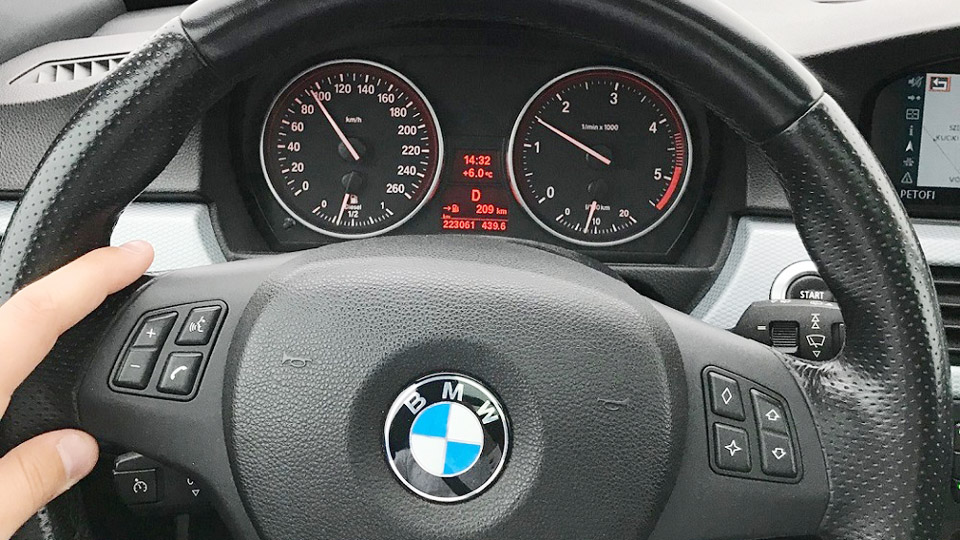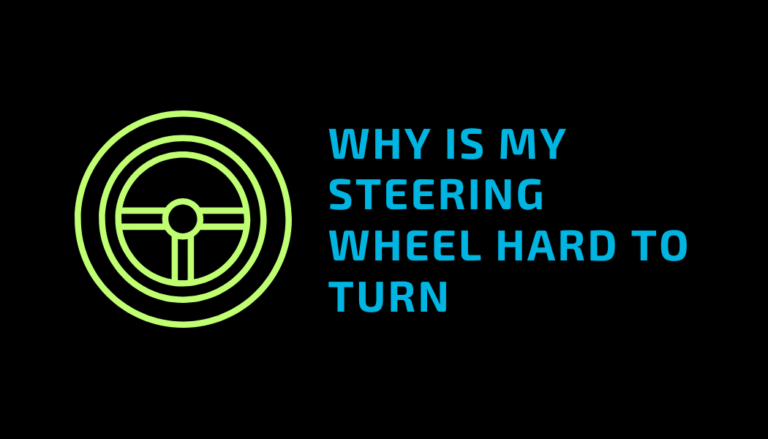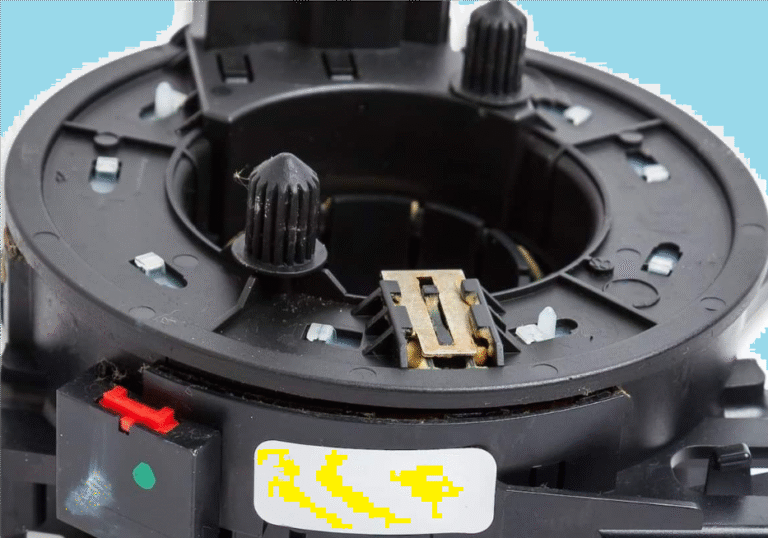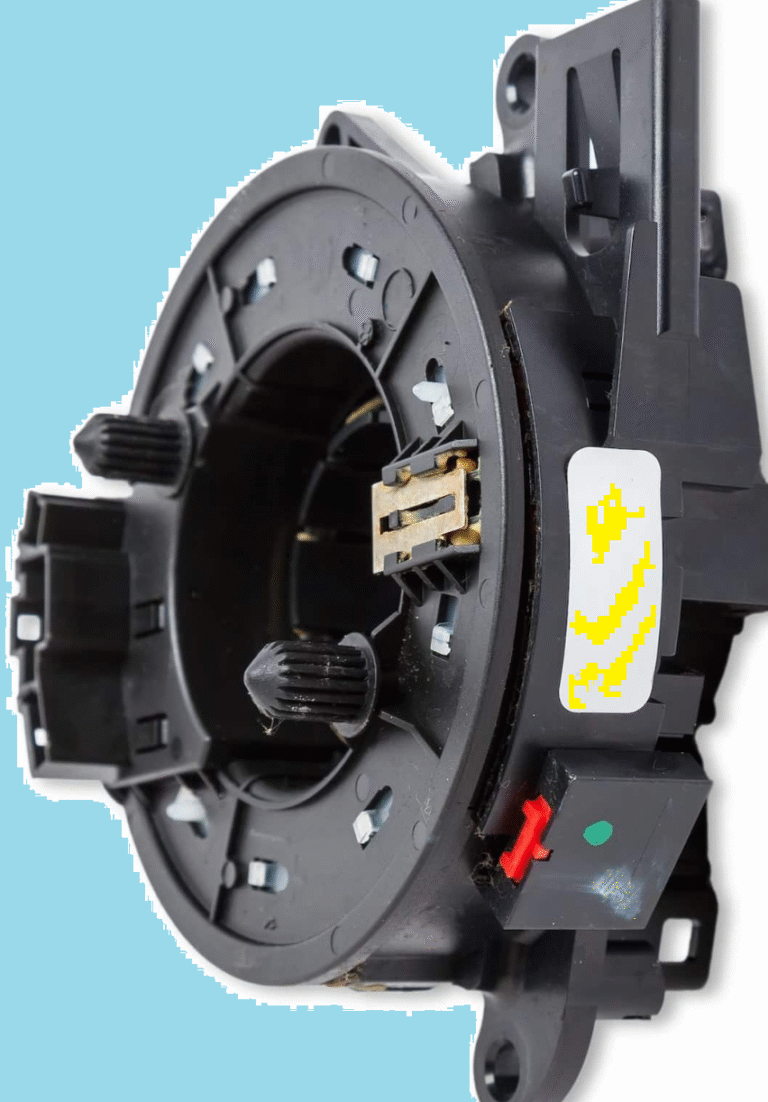Have you ever noticed your car pulling to one side or your steering wheel sitting a bit off-center when you’re driving straight? It’s frustrating, right? I’ve been there, gripping the wheel a little tighter to keep my car on track.
A misaligned steering wheel isn’t just annoying—it can mess with your car’s handling and wear out your tires faster. I’ve dealt with alignment issues on my old pickup and my current sedan, and I’ve learned a lot about what it takes to fix them.
I’m going to break down the costs of fixing steering wheel alignment, based on my own experiences and chats with mechanics across the USA. Whether you’re a daily commuter or a weekend road-tripper, let’s figure out what’s involved and how much it’ll set you back.

Photo by e90post
What Is Steering Wheel Alignment?
Steering wheel alignment, often just called wheel alignment, is about making sure your car’s wheels are angled correctly so it drives straight and handles well. When your wheels are out of alignment, your steering wheel might pull, vibrate, or sit crooked.
I first noticed this in my truck after hitting a massive pothole—the wheel wouldn’t stay centered, and the car kept drifting left. Misalignment can happen from everyday driving, hitting curbs, or just wear and tear over time. Fixing it involves adjusting the angles of your wheels—think toe, camber, and caster—so everything lines up perfectly.
The cost to fix alignment depends on a few things, like your car type, where you live, and whether other parts need repair. Let’s dive into the details so you know what to expect.
Factors That Affect Alignment Costs
The price of fixing steering wheel alignment isn’t a one-size-fits-all number. I’ve taken my cars to shops in different cities, and the costs varied based on a few key factors. Here’s what I’ve learned:
- Type of vehicle: Basic sedans are cheaper to align than trucks, SUVs, or luxury cars with complex suspensions.
- Location: Prices are higher in big cities like Los Angeles or New York compared to smaller towns.
- Type of alignment: A front-end (two-wheel) alignment is cheaper than a four-wheel alignment.
- Shop rates: Dealerships charge more than independent shops or chain stores like Firestone or Pep Boys.
- Additional repairs: If parts like tie rods or bushings are damaged, the cost goes up.
For a basic alignment, you’re looking at $60-$120 in most parts of the USA. But let’s break down the specifics to give you a clearer picture.
Cost of a Standard Wheel Alignment
A standard wheel alignment adjusts the angles of your wheels to match the manufacturer’s specs. I got a front-end alignment for my sedan a couple of years ago at a local shop, and it cost me $75.
For most cars, a two-wheel alignment (front wheels only) runs $50-$100, while a four-wheel alignment (all wheels) costs $80-$150. Four-wheel alignments are common for SUVs, trucks, or cars with all-wheel drive, like my friend’s Subaru.
Chain shops like Firestone or Goodyear often have deals, especially if you’re getting tires or other services. I once snagged a $60 alignment at Pep Boys during a tire rotation special.
Dealerships, though, can charge $100-$200 for the same job because of higher labor rates. If you’re in a big city, expect to pay on the higher end. In rural areas, you might get away with $50-$80.
Additional Repairs That Impact Cost
Sometimes, alignment isn’t just about adjusting angles. If parts in your steering or suspension system are worn, they need to be fixed first. I learned this when I took my pickup for an alignment, and the mechanic told me my tie rods were shot. Here are some common repairs that can add to the cost:
- Tie rods: These connect the steering rack to the wheels. Replacing them costs $100-$400 per side.
- Ball joints: These let your wheels pivot. Replacement runs $100-$350 per joint.
- Control arm bushings: Worn bushings cause loose steering. Replacing them costs $100-$500.
- Wheel bearings: Bad bearings can affect alignment. Expect $150-$400 per wheel.
- Steering rack: A damaged rack is rare but pricey, costing $500-$1,500 to replace.
In my case, replacing the tie rods added $250 to the bill, bringing the total to $325 with the alignment. Always ask the mechanic to check these parts before starting the alignment—it saves time and prevents repeat visits.
Types of Wheel Alignments
Not all alignments are the same, and the type you need affects the price. I didn’t know this when I first started dealing with alignment issues, but here’s what I’ve learned:
Front-end alignment (two-wheel): Adjusts only the front wheels. Best for older cars or front-wheel-drive vehicles. Costs $50-$100.
Four-wheel alignment: Adjusts all four wheels. Necessary for all-wheel-drive cars or vehicles with independent rear suspension. Costs $80-$150.
Thrust alignment: Aligns the rear wheels to the car’s centerline, then adjusts the front. Costs $70-$120.
Specialty alignment: For performance cars or modified suspensions. Can cost $150-$300 due to extra precision.
My sedan needed a four-wheel alignment because it’s all-wheel drive, which cost me $110. Check your car’s manual to see what type it needs, or ask your mechanic.
Labor and Shop Rates
Labor is a big part of the cost. Most shops charge $50-$100 per hour, and an alignment takes about 30-60 minutes. I’ve noticed chain shops like Midas or Jiffy Lube often have flat rates for alignments, which can save you money.
Independent shops might be cheaper, but make sure they have a good alignment machine—older equipment can lead to shoddy work. I had a bad experience at a small shop where the alignment was off after they rushed the job.
Dealerships charge more—sometimes $80-$150 per hour—because they use factory-trained techs and brand-specific tools. If you drive a luxury car like a BMW or Mercedes, you might need to go to a dealership for precise alignment, but for most cars, a reputable chain or independent shop works fine.
Geographic Price Variations
Where you live makes a difference. I’ve taken my cars for alignments in both rural Ohio and downtown Chicago, and the prices were night and day. In big cities, labor and overhead costs are higher, so expect to pay $80-$150 for a standard alignment.
In smaller towns or rural areas, you might pay $50-$100. For example, my sedan’s alignment in Ohio was $65, but in Chicago, a similar job cost $110.
If you’re in a high-cost area, shop around. Some national chains offer consistent pricing, and you might find deals online or through loyalty programs. I saved $20 once by booking an alignment through Firestone’s website.
DIY vs. Professional Alignment
Can you fix alignment yourself? I’ve wondered this, too, especially when I was low on cash. DIY alignment kits exist, using strings or lasers to measure wheel angles. They cost $50-$200, but here’s the catch: they’re tricky to use, and most home mechanics don’t have the precision equipment shops do.
I tried a DIY kit once on my old hatchback, and it was a headache—my steering was still off, and I ended up paying a shop anyway.
Professional alignments are worth the cost. Shops use laser-guided machines that get the angles just right. Unless you’re a skilled mechanic with the right tools, leave it to the pros. It’s safer and saves you from wasting time and money.
Signs You Need an Alignment
How do you know if your steering wheel needs alignment? I’ve learned to spot these signs after dealing with them in my cars:
- Steering wheel off-center: It sits crooked when driving straight.
- Car pulls to one side: You have to fight the wheel to stay in your lane.
- Uneven tire wear: One side of the tire wears faster than the other.
- Vibrations or shaking: The steering wheel shakes, especially at higher speeds.
- Loose or sloppy steering: The wheel feels wobbly or unresponsive.
If you notice any of these, get an alignment ASAP. Driving with bad alignment can damage tires and suspension parts, costing you more in the long run.
Comparing Alignment Costs
Here’s a table to give you a quick look at typical costs for fixing steering wheel alignment:
| Service | Average Cost | What It Involves | When It’s Needed |
|---|---|---|---|
| Front-End Alignment | $50-$100 | Adjusts front wheel angles | Front-wheel-drive or older cars |
| Four-Wheel Alignment | $80-$150 | Adjusts all four wheels | All-wheel-drive or independent suspension |
| Thrust Alignment | $70-$120 | Aligns rear to centerline, then front | Some trucks or SUVs |
| Tie Rod Replacement | $100-$400 | Replaces worn tie rods | Loose or clunking steering |
| Ball Joint Replacement | $100-$350 | Replaces worn ball joints | Clunking or uneven tire wear |
| Control Arm Bushing | $100-$500 | Replaces worn bushings | Squeaking or loose steering |
| Wheel Bearing Replacement | $150-$400 | Replaces bad bearings | Humming or shaking when turning |
How to Save on Alignment Costs
Alignments aren’t crazy expensive, but I’ve picked up a few tricks to keep costs down:
- Shop around: Call a few shops for quotes. Chains often have promotions.
- Bundle services: Get an alignment with a tire rotation or oil change for a discount.
- Use coupons: Check websites like Groupon or shop apps for deals.
- Go to chain shops: Places like Firestone or Goodyear often have lower rates than dealerships.
- Maintain your car: Regular tire rotations and careful driving prevent alignment issues.
I saved $30 on an alignment once by combining it with a tire purchase at Discount Tire. It pays to plan ahead.
When to Get an Alignment
Timing matters. I used to think alignments were only needed when something felt wrong, but now I get one every year or after certain events. Here’s when I recommend getting an alignment:
- After hitting a pothole or curb.
- When you buy new tires.
- If you notice pulling, vibrations, or uneven tire wear.
- Every 12-18 months as part of routine maintenance.
I make it a habit to check my alignment every spring, especially after rough winter roads. It keeps my tires lasting longer and my steering smooth.
Choosing the Right Shop
Not all shops are equal. I’ve had great experiences at chain stores like Firestone, but I’ve also been burned by a small shop that didn’t calibrate their machine properly. Look for a shop with:
- Modern alignment equipment (laser or computer-guided).
- Certified technicians (ASE certification is a good sign).
- Good reviews online or from friends.
- Transparent pricing—no surprise fees.
Ask the shop if they offer a warranty on the alignment. Some places, like Les Schwab, give you a free re-alignment within a certain period if the steering feels off again.
Advice for Keeping Your Alignment in Check
To avoid pricey alignment fixes and keep your steering wheel straight, here’s what I’ve learned:
- Check tire pressure monthly. Low pressure can mimic alignment issues. Use a gauge and match the number on your car’s door sticker.
- Rotate tires regularly. Every 6,000-8,000 miles helps prevent uneven wear.
- Drive carefully. Avoid potholes, curbs, and rough roads when you can.
- Get annual alignments. Even if nothing feels wrong, it catches small issues early.
- Listen to your car. Pulling, vibrations, or a crooked wheel mean it’s time to act.
These habits have saved me hundreds in tire and suspension repairs over the years.
Conclusion
Fixing a steering wheel alignment doesn’t have to break the bank, but it’s a job worth doing right. I’ve felt the frustration of a car that pulls or a wheel that’s off-center, and I know how much better it feels when everything’s lined up perfectly.
Whether it’s a $60 front-end alignment or a pricier fix involving tie rods, getting it done restores your car’s handling and keeps you safe on the road. By shopping around, maintaining your car, and catching issues early, you can keep costs down and your drives smooth.
There’s nothing like the confidence of a car that steers straight and true, whether you’re navigating city streets or cruising down the highway.
FAQs
How much does a basic wheel alignment cost?
A front-end alignment costs $50-$100, while a four-wheel alignment runs $80-$150. Prices vary by location and shop type.
Can I drive with a misaligned steering wheel?
It’s okay for short drives to a mechanic, but long-term driving with bad alignment can wear out tires and damage suspension parts.
How do I know if I need an alignment?
If your car pulls to one side, the steering wheel is off-center, or you see uneven tire wear, it’s time for an alignment.
Can I fix alignment myself?
DIY kits exist, but they’re tricky and less precise. Professional shops with laser equipment do a better job for the cost.
How often should I get an alignment?
Get one every 12-18 months, after hitting a pothole, or when you buy new tires. Regular checks prevent bigger issues.
Why is my alignment off after new tires?
New tires can highlight existing alignment issues. Always get an alignment when you replace tires to ensure even wear.
Do I need a four-wheel alignment?
If you have an all-wheel-drive car or independent rear suspension, a four-wheel alignment is best. Check your car’s manual or ask a mechanic.




